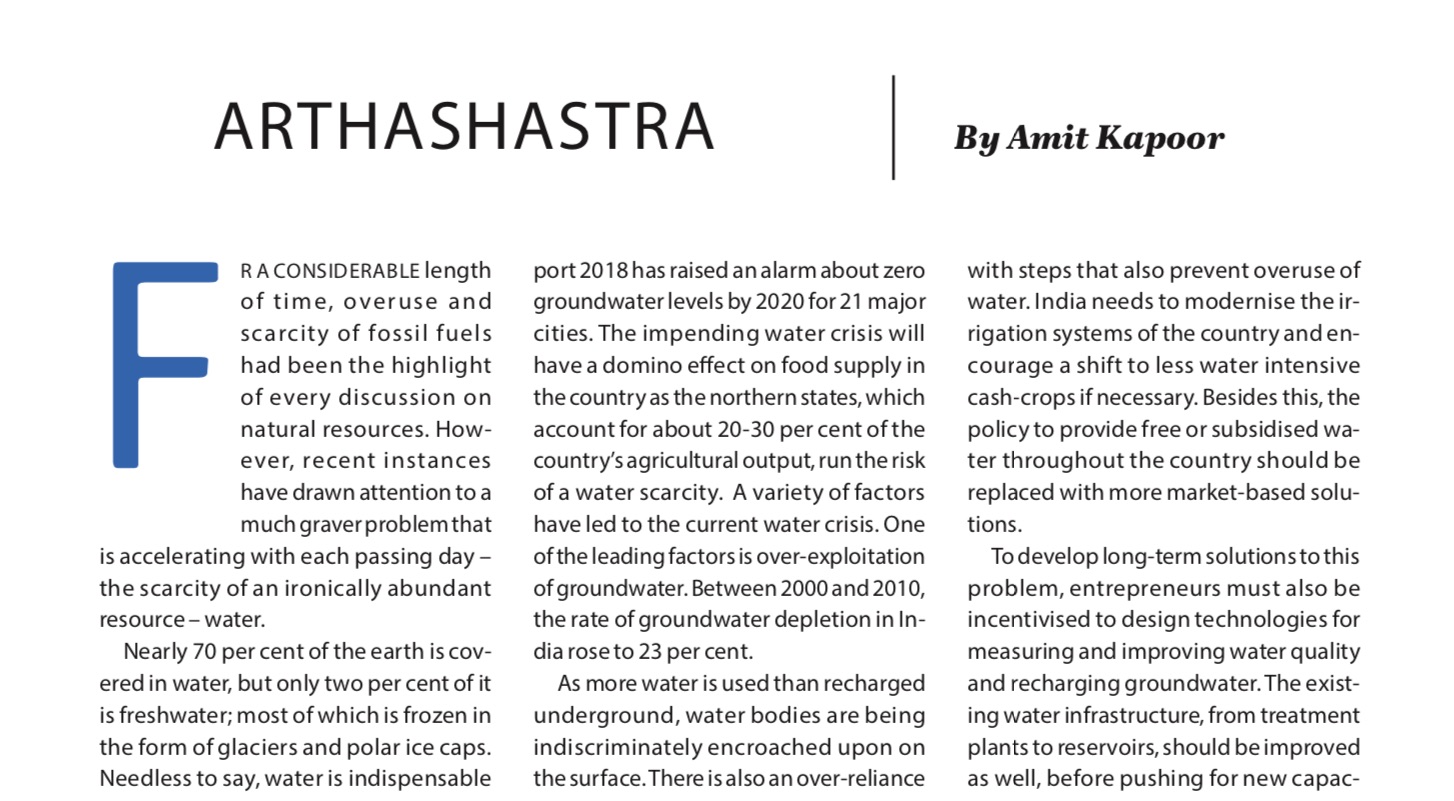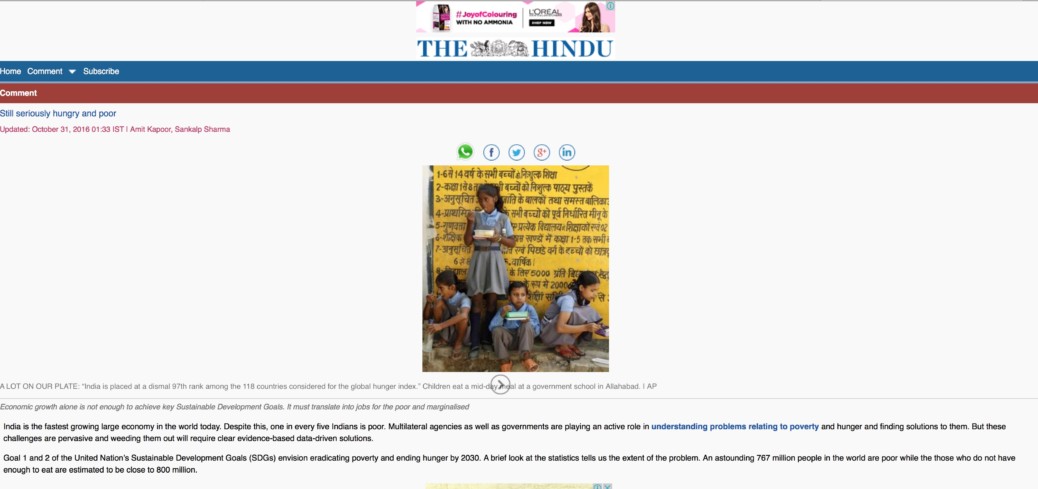By Amit Kapoor and Kartik
As India gears towards the target of Viksit Bharat by 2047, the development of the state of Bihar emerges as an immediate concern for the country. A thorough examination of the state’s prevailing economic condition highlights the urgency of an integrated approach to Bihar’s development, with a balanced focus on both social and economic dimensions.
Bihar contributed 2.75 per cent to India’s GDP in the fiscal year 2022-23. Home to about nine per cent of the Indian people, Bihar has the lowest GDP per capita among all the states and UTs in the country at Rs 35,119. The extent of the distress can be gauged from the fact that if Bihar were an independent country, it would have stood as the 12th most populous nation in the world, somewhat identical to the size of economies like Japan and Mexico. But its per capita income would have been amongst the bottom five countries in the world, much below the least developed countries, such as Somalia, Sudan, and Sierra Leone. The district-level analysis shows that the per capita income of the state capital, Patna is high, at Rs131,064, as against districts such as Sheohar, with a per capita income of a mere Rs19,592. Such contrasts go a long way toward skewing the overall state average and underlining economic distress and inequality within Bihar. It is indicative not only of the overall economic lag compared to the national average but also of the uneven development within the state itself.
A closer look at the sectoral composition of Bihar reveals a complex interplay between the dimensions of agricultural dependency, infrastructural deficits, and untapped potential in different sectors. The share of the agricultural sector in the economy of Bihar during the financial year 2021-22 stands at 20.56 per cent, which is low compared to other states. The agriculture of Bihar is characterised by a paradoxical struggle against both floods and droughts. The Bihar State Disaster Management Authority (BSDMA) states that in 74 per cent of places, the northern regions get flooded, with the River Kosi causing annual destruction.
At the same time, extreme drought is faced by southern districts, namely Rohtas and Nawada, which happens due to poor irrigation facilities. In this regard, to overcome the potential disaster, different major schemes, including the Kosi-Mechi intrastate link, have been launched by the central government. These efforts will help in flood control and increase irrigation to another 2.15 lakh hectares. The government has taken this step as a strategic move toward stabilising agricultural output and productivity in a state where agriculture is a key factor in economic growth.
However, as illustrated by the recently released data from the Annual Survey of Industries (ASI) for 2021-22, Bihar’s persistent underperformance in the manufacturing sector requires a strategic shift in developing Bihar’s economic development approach, extending beyond the traditional focus on agriculture to address broader infrastructural and industrial challenges that the state faces.
Annual Survey of Industries data reveals a disconcerting picture of Bihar’s manufacturing landscape. The state accounts for only 1.37 per cent of the country’s operational factories and ranks 21st in gross value added, contributing just 0.62 per cent to India’s GVA. It is concerning that the total engagement in terms of persons has been on a downward trajectory in the state at a compound annual growth rate (CAGR) of 1.65 per cent since 2014-15. This trend reflects the current state of industrial stagnation, indicating a potential future crisis in employment generation and economic diversification. Some of the recent initiatives, such as the proposed Gaya industrial node as part of the Amritsar Kolkata Industrial Corridor, may provide an opportunity for the state to stimulate manufacturing, agro-processing, and export-oriented industries. These initiatives can lend a much needed impetus for a possible trend reversal of the industrial decline while achieving employment generation simultaneously.
Employment generation can be catalysed further by harnessing the rich cultural heritage of the state. The recent announcements regarding the development of historical and spiritual sites like Nalanda, Vishnupad, and Mahabodhi temple corridors, inspired by successful projects like the Kashi Vishwanath Corridor, could transform Bihar into a global tourism hotspot, significantly boosting the economy of the state at the local level.
Such a multidimensional approach unifying the challenges of agriculture, industrial growth, and harnessing tourism presents a comprehensive blueprint for building economic growth. It would diversify the economy by improving basic infrastructure, industrial corridors, and better use of cultural assets, thereby creating forward and backward linkages. The success of these projects may serve as a model for areas facing similar challenges and impediments to development. It may lead to the reformulation of approaches to water resource management in the areas dependent on agriculture and may offer a template for economic rejuvenation in states that have been historically disadvantaged in industrialisation and infrastructure development.
Creating a focused approach across critical sectors like agriculture, industry and tourism, could transform the economic distress present in Bihar into sustainable growth. The success of this approach could be a milestone for development and governance by generating lessons for other underdeveloped regions where balanced regional development compounds into the larger success of the state and nation, carving a path to India’s vision to transition into a developed economy by 2047.
(Amit Kapoor, is Chair at Institute for Competitiveness and Kartik is Researcher at Institute for Competitiveness)
The article was published with Business World.























